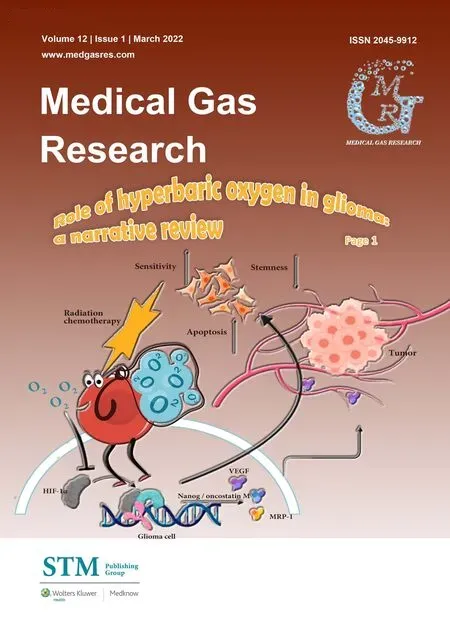Effects of nitrous oxide on end-tidal carbon dioxide measurements in spontaneously breathing patients under general anesthesia
Dear Editor,
It is common practice to administer nitrous oxide (N2O) along with inhalational anesthetic agents to take advantage of its additive effect on minimal alveolar concentration levels.Measurement of the end-tidal carbon dioxide (EtCO2) concentrations is a component of the American Society of Anesthesiologists Standards for Basic Intra-Operative Monitoring and has become standard of care for patients undergoing general anesthesia.We write to discuss two mechanisms where the use of N2O can erroneously alter the EtCO2levels.
A 26-year-old male,with a left radial nerve injury,was posted for tendon transplantation.He underwent tendon transplantation under general anesthesia and spontaneously breathed with a supraglottic airway device (I-gel:size 4).Adequate depth of anesthesia and analgesia was maintained to prevent tachypnoea,sighing,intra-operative awareness,and movement.Ten minutes into the surgery,a gradual rise in the EtCO2level was noted in spite of constant ventilatory parameters.The intra-operative parameter measures are given in Table 1.

Table 1:Measurement of intraoperative parameters
This rise in the measured level of EtCO2may be explained by an insufficiently narrow infrared filter used for measurement of EtCO2levels,or by a collision broadening phenomenon.
(i) Insufficiently narrow infrared filter:The standard capnograph works on the principle that carbon dioxide absorbs infrared radiation.When infrared light of a spectrum is passed through a gas mixture containing CO2,some of the infrared light is absorbed,and less amount of light reaches the sensor at the opposite end.However,the presence of N2O in the gas mixture may interfere with this because of the similar infrared absorption spectra of both gases (4.5 μM for N2O and 4.3 μM for CO2).Therefore,the use of an insufficiently narrow infrared filter sensor of the monitor may lead to an erroneously high EtCO2 reading,and the same may be corrected by using an infrared filter sensor with a narrower absorption range.
(ii) Collision broadening phenomenon1:This refers to the phenomenon of the spectral absorption peak of a gas being broadened owing to the collision or proximity of molecules of another gas.Therefore,due to this phenomenon,the presence of co-administered N2O in the fresh gas flow would cause a broadening of the spectral gas absorption peak of CO2.This broadening of the spectral absorption peak causes a falsely high EtCO2reading.While this is a common phenomenon,most monitors have an electronic compensation to account for this effect wherein the monitor is calibrated with a gas mixture that contains the same background gas concentration as that to be analyzed.Additionally,various correction factors have also been studied wherein the actual EtCO2can be derived from the measured EtCO2,with the correction factors differing according to the amount of N2O present in the fresh gas flow.One such factor is as follows (Table 2).2,3

Table 2:Actual end-tidal carbon dioxide corrected according to the amount of N2O present in the fresh gas flow
We reported this case as an informal survey of anesthesiologists with a low awareness of the existence of this phenomenon,which has clinical importance as it can lead to inappropriate hyperventilation of the patient.
- Medical Gas Research的其它文章
- A special oropharyngeal oxygenation device to facilitate apneic oxygenation in comparison to high flow oxygenation devices
- Xenon as a transdermal enhancer for niacinamide in Strat-MTM membranes
- Effect of an ionic antineoplastic agent Cytoreg on blood chemistry in a Wistar rat model
- Comparing the effect of xenon and sevoflurane anesthesia on postoperative neural injury biomarkers:a randomized controlled trial
- Potential role of hydrogen sulfide in central nervous system tumors:a narrative review
- Role of hyperbaric oxygen in glioma:a narrative review

